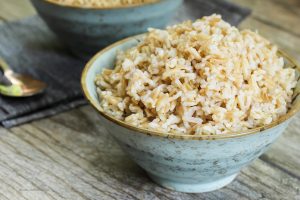Three members of Congress have introduced a bill to limit the levels of arsenic in rice. Consumer Reports released a report that will appear in the November 2012 issue of their magazine stating that their tests have found rice and foods made from rice, including infant rice cereals, have the most toxic form of arsenic. No federal limits exist for arsenic in most foods. Make sure to look at the Consumer Reports story carefully; at the end they have a chart that lists the rice and rice products they tested and arsenic levels found.
 Representatives Rosa DeLauro (D-CT), Frank Pallone (D-NJ), and Nita Lowey (D-NY) have introduced the R.I.C.E. Act (Reducing food based Inorganic and organic Compounds Exposure Act). It requires the FDA to set a “maximum permissible level of arsenic in rice and food containing rice.”
Representatives Rosa DeLauro (D-CT), Frank Pallone (D-NJ), and Nita Lowey (D-NY) have introduced the R.I.C.E. Act (Reducing food based Inorganic and organic Compounds Exposure Act). It requires the FDA to set a “maximum permissible level of arsenic in rice and food containing rice.”
The standard limit for arsenic in drinking water is 10 parts per billion (ppb). This is twice the level of 5 ppb that the EPA first proposed. Using the 5 ppb standard, Consumer Reports found that a single serving of some types of rice could provide 1-1/2 times the level of inorganic arsenic an adult would get from an entire day’s consumption of water. And they found that some infant rice cereals had “levels of inorganic arsenic at least five times more than has been found in alternatives such as oatmeal.” Consumer Reports recommends limiting the consumption of rice products.
Rep. DeLauro said in a statement, “the idea that high levels of arsenic, a known carcinogen, are present in rice, cereal and other common, everyday foods is absolutely outrageous. The federal government has an obligation to every American family to ensure that the food they consume is safe and should not make them sick.”
The Consumer Reports study found some important trends. White rice that is grown in Arkansas, Louisiana, Missouri, and Texas, which make up about 76% of total domestic rice product, had higher levels of total arsenic and inorganic arsenic. The average arsenic levels were always higher for brown rice than for white. And people who ate rice had arsenic levels that were 44% higher than those who do not eat rice. Rice absorbs arsenic very efficiently, because it is grown in water-flooded conditions.
Inorganic arsenic is a Group 1 human carcinogen. It causes bladder, lung, and skin cancer in people, and may contribute to the development of liver, kidney, and prostate cancer. The United States is the world’s leading user of arsenic. Since 1910, 1.6 million tons have been used. Since 1960, more than 8 million tons have been used. While lead-arsenate insecticides are banned, other arsenical ingredients are still permitted, especially in animal feed. So fertilizer made from poultry waste can contaminate crops.




